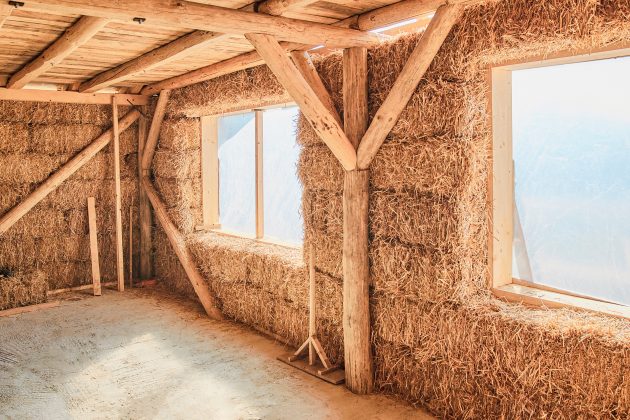As the world becomes more aware of the importance of sustainability, more people are looking for ways to make their homes more sustainable. In fact, the Earth Day movement found that, as of 2021, around 85% of the global population preferred to be more environmentally friendly. About 24% of these people come from the new generation (Millennials), supporting the idea that eco-conscious living isn’t just a trend but a way of life.

If you’re shifting your lifestyle to be more sustainable, why not start with your home? After all, it’s where you spend the majority of your time. Not only will it help the environment, but it can also save you money in the long run.
There are plenty of ways to achieve sustainable home designs. Check out these five pro tips to get you started:
1. Use green building materials
The material type you use to renovate or design your home can significantly impact its sustainability. Construction and demolition waste comprise a large portion of landfill waste, so it’s crucial to be mindful of the material used.
There are many green building materials available on the market, including:
- Recycled steel
- Reclaimed wood
- Cork
- Bamboo
- Recycled glass
These materials aren’t only ecological but also durable and stylish. So, you can be confident that your home design is sustainable and beautiful.
2. Install a solar energy system
Solar energy is one of the most sustainable and efficient renewable energy sources. With technology becoming more sophisticated, solar generators, panels, and batteries are increasingly becoming popular with homeowners.
Here’s a quick guide on how solar energy works:
- Solar panels collect sunlight and convert it into direct current (DC) electricity.
- An inverter then transforms the DC electricity into alternating current (AC) electricity, which is the type of electricity used in your home.
- The AC electricity powers your home and sends any excess back to the grid.
If you’re installing a solar energy system, there are a few things you need to keep in mind:
- The system’s size will depend on the electricity you use and the sunlight your home receives.
- You’ll need to decide whether you want a portable or fixed solar power system. Portable ones like solar generators are ideal for camping or traveling. Fixed systems are permanent and are usually installed on roofs.
On top of that, this solar element has several advantages to offer, such as:
- Clean and renewable resources
- Reduces your carbon footprint
- Increases the home resale value
- Prevents global warming
All these benefits make solar energy systems an excellent option when designing a green home. Just choose a high-quality system for a reliable provider to get the most out of this eco-friendly resource.
3. Invest in energy-efficient appliances
Appliances are some of the primary energy-consuming culprits in your home. In a report, household appliances and devices reached more than 3 000 terra-watt hours in 2019, accounting for around 15% of the worldwide total electricity demand. In other words, your home appliances use a significant amount of energy. So, it’s worth saying that energy-efficient equipment can do wonders for designing a green home.
When shopping for appliances, look for the ENERGY STAR® LABEL. This label is a joint program of the US Environment Protection Agency (EPA) and the US Department of Energy (DOE). This helps consumers conserve energy and protect the environment by using energy-saving products and practices.
4. Consider adding insulation
A well-insulated home provides heat flow resistance, which helps keep your home warm in the winter and cool in the summer. Installing insulation in attics, crawl spaces, walls, and floors can minimize leaks, drafts, and moisture build-up. This will increase energy efficiency, as your HVAC system won’t have to work hard to maintain a comfortable temperature. As a result, you can reduce your heating and cooling costs by up to 20%.
Here are a few types of insulation you can use:
- Cellulose
- Spray foam
- Fiberglass
- Mineral wool
- Polystyrene beads
- Sheep’s wool
Each type has its own advantages and purposes. It’s best to consult a professional to assess your home and choose the best insulation for your needs. By adding insulation, your home will be more comfortable all year round.
5. Don’t forget to let the natural light in
Designing a sustainable home doesn’t mean you have to compromise on style or comfort. There are plenty of ways to let natural light in without sacrificing your home’s aesthetics. You can add features, such as:
- Skylights
- Light wells
- Large windows
You can also hang an oversized mirror to reflect light and brighten the space. Add some greenery to create a fresh and calm ambiance. These simple additions can make a difference in your home’s overall look and feel.
Using natural light in the daytime can reduce your reliance on artificial lighting. There’s nothing better than enjoying the warm shades of the sun while saving energy simultaneously. So, don’t forget this free and renewable resource when designing your home.
Takeaway
Sustainability is essential when it comes to home design, but that doesn’t mean it has to be expensive or complicated. There are plenty of simple and cost-effective ways to create a more sustainable home. By following the tips mentioned above, you can save money, reduce your environmental impact, and live in a comfortable and stylish home.















